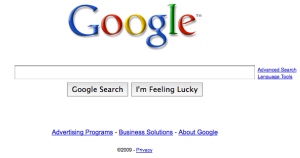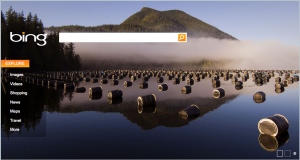
We’ve perhaps thought of our lives as a story with a beginning, a middle and an end. We’ve thought of our identity as the vessel that traces that path from the starting point to the endpoint. From Descartes we import the idea that our identity can be reduced to single point and be put in opposition to the world. All of an individual’s connections to the world can be snipped, one by one, through the use of radical doubt and skepticism. The doubting, questioning voice is the remainder– by process of elimination, it is human identity. But it is identity without context, without world. It’s nowhere.
This idea continues to play out in the story of the rugged individualist. The person to whom no connection cannot be cut, and no connection is essential. Culture, society and government have no hold on this person, he does as he chooses regardless of the ties that bind. It’s in the film genre of the Western that this story is most completely explored. The man at the edge of society, called on to save society, nonetheless he’s not part of the network of connections that make up society. In John Ford’s The Searchers, Ethan Edwards (as portrayed by John Wayne), his mission complete, doesn’t join the family circle, but instead walks out into the deserted plain alone.
Another formulation was provided by Groucho Marx in a telegram he sent to the Friar’s Club of Beverly Hills:
“PLEASE ACCEPT MY RESIGNATION. I DON’T WANT TO BELONG TO ANY CLUB THAT WILL ACCEPT PEOPLE LIKE ME AS A MEMBER”
In this narrative, our identity is not defined by our difference, but by our capacity for disconnection. However, as we begin to surface in the Network, we find ourselves in a landscape composed entirely of connections. While some connections are private and some public, unconnected nodes are a contradiction in terms. In some sense, we view it as problematic that our identity is splintered across so many containers. We’d like to connect up all the pieces to create some whole that we might call our internet identity. We look at all those things scattered about and say: those are mine, or those are me.

And here’s where we come to the loopiness of identity. We often talk of internet identity as the assignment, and use, of a unique identifier for individual agency. Some fixed token that can serve to differentiate an individual from all other individuals in a name space. But there’s a different sense of identity emerging in the Network. In any number of different online services we see an image of ourselves beginning to come into focus. Social networks provide an obvious example, but these data images also are forming based on our financial data, our medical records, and our purchase histories. There are traces of us everywhere.
We might use an iPod and a special Nike sneaker to establish and update a data loop that models our exercise activity. Our investment portfolio or 401k models our financial state. Perhaps we use a bathroom scale that sends data to a system that tracks the fluctuations in our weight. Or we collect data on how well we sleep at night and transmit it to a system that puts it into the context of other sleepers. In the public sphere, we might contribute to blogs, microblogs and comment systems. The identity we take part in creating unfolds over time, it’s a feedback loop that grows and deepens.
This is where identity and digital product begin to merge. This idea occurred to me while listening to a recording of Adam Bosworth talk about his new health maintenance company Keas. More and more companies are seeking customers who will participate in the creation of an identity loop. As someone who as spent a fair amount of time trying to interest employees in participating in their 401ks, I understand that some loops are very attractive and others are like eating your vegetables. And while this looks like an evolution of the idea of CRM, perhaps a system where customers also have an account; it might well take the form of VRM or Purpose-Centric web browsing. The core requirement is that data has to come from both sides of the glass with a sense of joint ownership of the loop.
And that’s where we loop back to the identity of the rugged individual. This kind of “connecting” behavior seems to run counter to cultural patterns. Rather than seeking to deepen loops of engagement, we tend to define our identity by what we can disconnect ourselves from (privacy). And the loops we’re most familiar with are the neurotic ones — addiction, compulsion, binging and purging. As our material digital identities begin to emerge in the Network around us, it will be interesting to see whether we will establish ecosystems and engage them in healthy feedback loops, or whether we will reverse course entirely and outlaw them as an invasion of privacy and as inconsistent with our cultural mores.
One Comment









